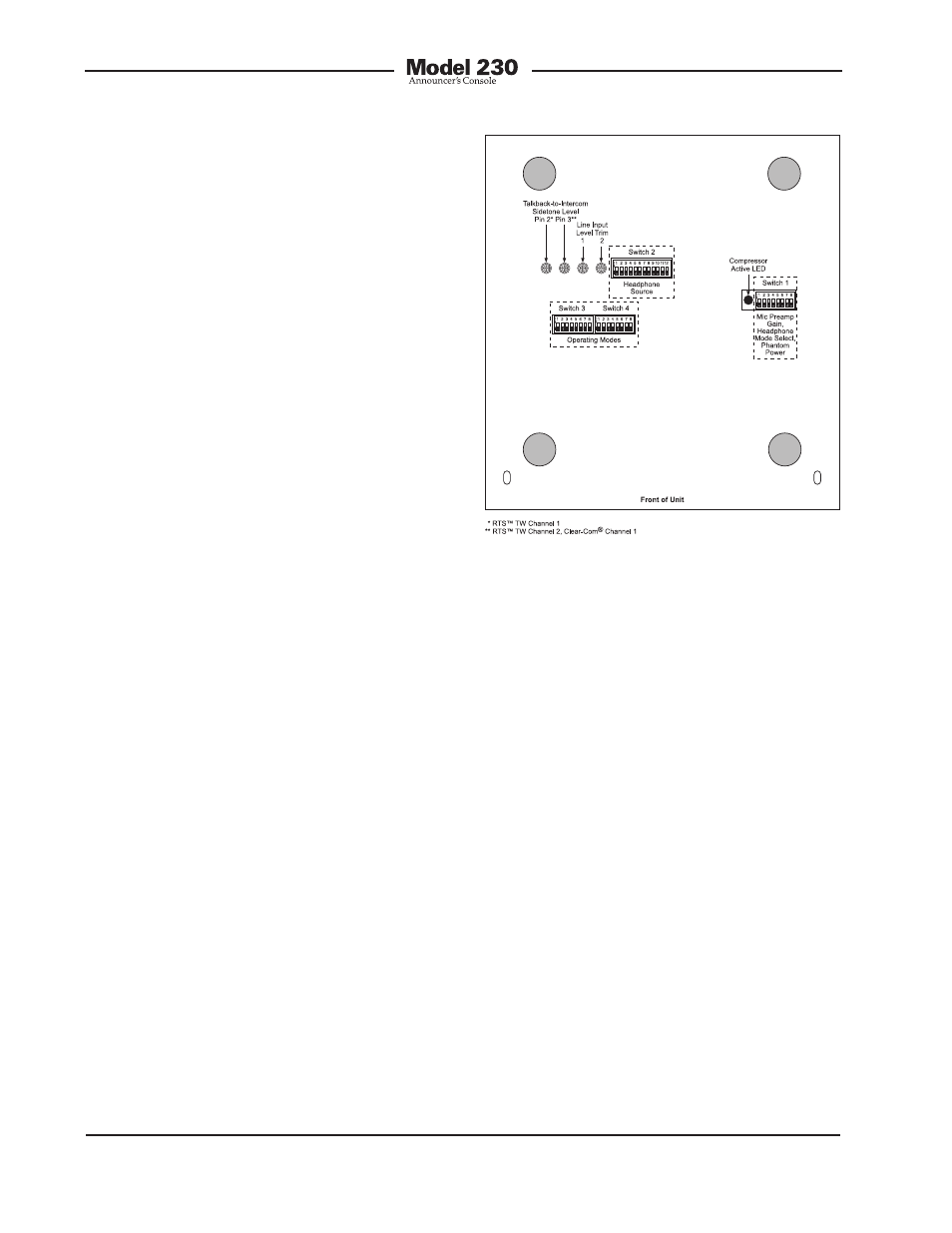Advanced operation, Adjusting the line input trim pots – Studio Technologies 230 2008 User Manual
Page 36

Issue 7, October 2008
Model 230 User Guide
Page 36
Studio Technologies, Inc.
Advanced
Operation
Adjusting the Line Input
Trim Pots
As has been previously mentioned, asso-
ciated with the line inputs are trim pots
that allow the input levels to be adjusted.
The two trim pots are accessible by way
of round openings in the bottom of the
Model 230’s enclosure. By adjusting these
trim pots, signals with a nominal signal
level of –12 dBV to +6 dBu can be effec-
tively used as cue sources. Unfortunately,
there are no definitive rules regarding
how best to adjust the trim pots, but
some suggestions may prove to be valu-
able. Depending on how the line inputs
are utilized, the trim pots can be used to
either adjust the absolute level each line
input signal, or to adjust the relative level
of the signals when compared to other
sources. The following examples may
provide some clarification.
Let’s begin with an application that has
a stereo cue source connected to the
line inputs. The source selection DIP-type
switches are configured to create a stereo
headphone output with line input 1 as-
signed to the left channel and line input
2 assigned to the right channel. Begin
the trim pot adjustment process by mov-
ing the user level controls (located on the
front panel) to their detent (50% of rota-
tion) positions. Then, with the stereo cue
source providing signal at its normal level,
adjust the trim pots to provide a comfort-
able level to the connected headphones.
The user can now, in response to chang-
ing conditions, adjust the front-panel level
controls as desired. Returning the con-
trols to their detent positions will always
provide the “reference” level to the head-
phone output.
A second example has the IFB input and
line input 1 both providing cue sources.
Channel 1 of the IFB circuit supplies
program-with-interrupt audio that is routed
to the headphone output’s left channel.
Channel 2 of the IFB circuit supplies
program-only audio that is routed to the
right channel. Line input 1 is connected
to an audio source associated with a
sports-event “spotter” position. This
source is routed to the headphone out-
put’s right channel. The input trim pot
associated with line input 1 can now serve
a critical role—adjusting the relative level
of the “spotter” audio as compared to the
level of IFB channel 2. The trim pot allows
the desired “mix” to be created, providing
the user with an effective cue signal.
Figure 20. Bottom view showing line input and
talkback-to-intercom sidetone trim pots
